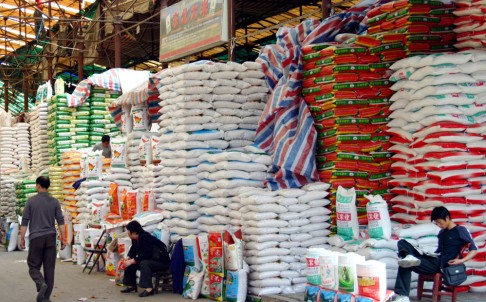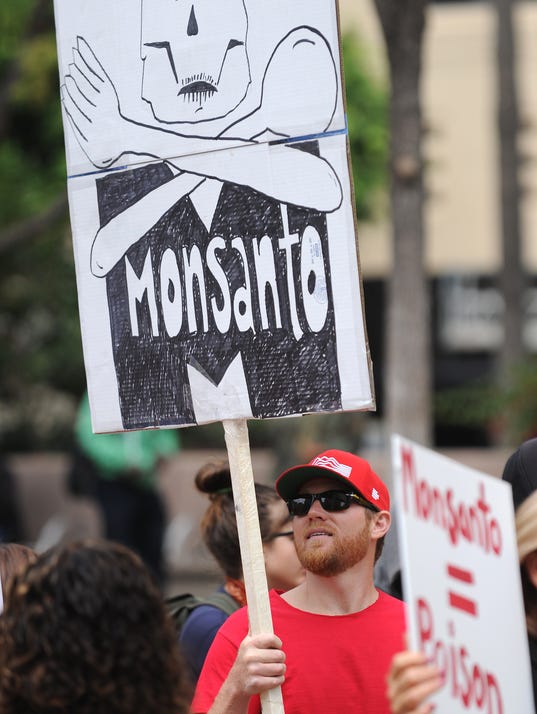China must switch to growing GM food before it's too late: scientist
Agricultural expert warns of crisis if country does not start growing modified crops and continues to rely on foreign imports


Agricultural expert warns of crisis if country does not start growing modified crops and continues to rely on foreign imports. Photo: AP
A leading agricultural scientist's unusually frank endorsement of growing genetically modified food has reignited a debate over whether the country should reconsider its long-time distaste for the controversial food source.
A leading agricultural scientist's unusually frank endorsement of growing genetically modified food has reignited a debate over whether the country should reconsider its long-time distaste for the controversial food source.
 Professor Wu Kongming, a member of the influential Chinese Academy of Engineering, said the country risked increasing grain shortages and a dangerous dependence on foreign food imports if it continued to shun GM food.
Professor Wu Kongming, a member of the influential Chinese Academy of Engineering, said the country risked increasing grain shortages and a dangerous dependence on foreign food imports if it continued to shun GM food.
"The conflict between food demand and supply in our country does not allow us to put aside the development of GM technology any longer," Wu, who is also vice-president of the Chinese Academy of Agricultural Sciences, told China National Radio.
"China's situation has determined that we cannot follow the countries with very rich land resources to use traditional methods to satisfy our demand," he said.
"Our way out is to use modern technology to support the development of our agriculture."
China imports about 80 million tonnes of grains, such as soya beans, rice and wheat, each year, some of it genetically modified. To produce that amount of food domestically, the country would need 53 million more hectares of farmland, 44 per cent more than there was now, Wu said.
The imports had not only reduced food security but also strained global food supply, he said, adding that the country was running out of time to switch to GM food production.
Genetic modification, which is banned for staple grains such as rice and wheat on the mainland, could help crops better weather droughts, pests and diseases, as well as help farmers achieve higher yields, Wu said.
"As the imbalance gets worse, we may have to give up cotton and oil production to ensure a stable grain supply," he said. "To China, that is a dangerous signal."
Wu's remarks make him one of the few agricultural scientists to speak up for GM food on the mainland, where opposition to the products is deep-rooted and widespread.
Many mainlanders share the concerns of people elsewhere that using GM crops could cause unforeseen damage to the environment, such as introducing engineered genes into the wild.
Others fear eating such food could endanger health, although the World Health Organisation describes the risk of allergic reactions or transfers of antibiotic resistance as low.
Some hardline communists also argue that GM crops - often produced by large Western multinational companies - could provide a back door for an attack on the country's food supply.
A GM-rice researcher with the Chinese Academy of Sciences' Institute of Genetics and Developmental Biology said most of the mainland's scientific community agreed with Wu, but few dared to speak up.
"If I openly defended the technology, my mobile phone would probably ring from dawn to dusk tomorrow with hate calls. That has happened to a colleague of mine," said the researcher, who declined to be named.
"In this country, public fear over GM food is bigger than the fear of atomic bombs."
Online, Wu's remarks drew mostly negative comments.
"The scientists can't prove GM food is safe unless they eat it every day," an internet user from Hefei , Anhui , wrote on Sohu.com's discussion board.
Yu Jiangli , of Greenpeace China's food and agriculture team, said people feared the inherent uncertainty of the technology.
"GM food may solve the food shortage in the short term, but in the long term it could bring other issues," she said.
"In China, there are many alternatives to improving food productivity, such as improving field management and reducing consumer waste, which are safer and more sustainable."
This article appeared in the South China Morning Post print edition as We need gm food now, says scientist

